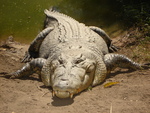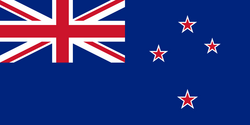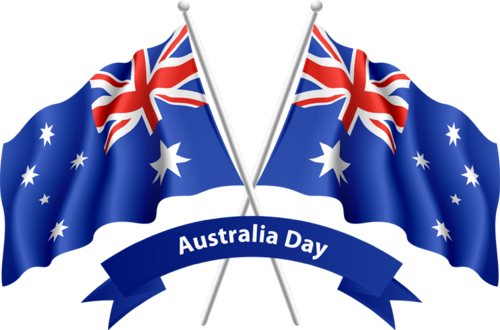-
Par Heloaustralia le 5 Juin 2016 à 04:32
I cannot talk about Sydney without talking about Sydney Opera House. This monument is known worldwide for its great architecture. I was lucky enough to visit it and I was impressed so I want to devote an article to this famous monument.
History
The project of the Opera was born in the late 1940s: the director of the New South Wales State Conservatorium of Music demanded the construction of a building capable of hosting major theatrical and musical productions. Indeed, the Sydney Town Hall then filled that role, but it was not enough anymore. Prime Minister Joseph Cahill supported the demand and commanded a study.
The project received more than 200 proposals, but it was Jørn Utzon’s one, a Danish architect, which was retained in 1955.
The construction was conducted from 1958 to 1973 for a total cost of 102 million Australian dollars (instead of 7 million initially planned!).

 Jørn Utzon and Sydney Opera House
Jørn Utzon and Sydney Opera House You can see more photos of the building here.
Characteristics
Sydney Opera House is 183 meters long and 120 meters wide. Its total area is 1.8 hectare. 580 concrete pillars sink to 25 meters below sea level to support this building. Its power requirements are equivalent to those of a city of 25,000 inhabitants. The electric power is distributed by 645 kilometers of electrical cables.
The shape of the Opera is particularly original and famous. There are two sets of three "shells" which partially overlap each other. The "coasts" carry the shells.
The roof is composed of more than one million white ceramic tiles, based on bowls that Utzon had seen in Japan. They are self-cleaning and very strong. Since the construction, only 17 of them have been replaced.
The interior decoration is made of pink granite, quarried in Tarana (New South Wales).Sydney Opera House can accommodate nearly 6,000 spectators in six different theaters.
The Opera was inaugurated by Queen Elizabeth II on 20th October, 1973. The program included fireworks and a performance of Beethoven's Ninth Symphony. Millions of people attended the event, which was broadcast on television.

On 28th June, 2007, Sydney Opera House was declared a World Heritage by UNESCO, like 18 other Australian sites. 8.2 million people visit the Opera House every year.If you are curious and want more information, please visit the Sydney Opera House website.
 1 commentaire
1 commentaire
-
Par Heloaustralia le 16 Mai 2016 à 03:11
Since February, I am attending classes at Australian Catholic University (ACU). It is a public university.
ACU has 7 campuses in Australia: two in Sydney
 (North Sydney and Strathfield), one in Adelaide, Ballarat, Brisbane, Canberra and Melbourne.
(North Sydney and Strathfield), one in Adelaide, Ballarat, Brisbane, Canberra and Melbourne. ACU « empowers students to think critically, ethically and to bring about change in their communities and professions ».
History
ACU was born in the late 80s, by the merger of 4 Colleges of Advanced Education: the College of Education in Sydney, the Institute of Catholic Education in Victoria, the Queensland McAuley College and the College of Signadou Education in the Australian Capital Territory. The government wanted to deal with one contact and thus a single university. By merging, these colleges formed the Australian Catholic University, the only public Catholic university of the country. ACU opened on 1st January, 1991.
The mission of the university is to teach a "spiritual" education. There is a strong part of social justice in the programs.
The university promotes international openness and mobility.ACU has 4 faculties: Education and arts, Health sciences, Law and business, Philosophy and theology.
My campus
I am studying at North Sydney Campus. The campus is a 10 minute train ride away from the city centre. You can view it on the map:

There are more than 3,000 students on my campus, and almost a third of them are international students.
Here are some pictures of my campus:

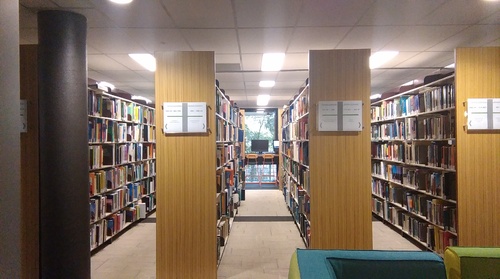






Class content
I am attending 4 courses at university, each of them being divided into two hours of lecture and one hour of tutorial every week.
My 4 courses are: Employment law, HR management, HR development and Staffing and talent management.
I have chosen HR courses because I'm interested in HR, but the courses I've had in France have not allowed me to get a thorough opinion about this sector.
The courses I have selected allow me to learn about HR principles and to study the changes that have occurred in the past few years.
The lectures are a 2 hour course similar to amphitheater courses in France. The tutorials are one hour long and they are based on a more participatory mode.
For each course, I have two assessments during the semester and a final exam at the end (in June).
Every week, we have some texts to read in order to prepare the next course.
In terms of cultural differences in the classroom, students are allowed to arrive late for class. Teachers don’t say anything. Students can also leave the classroom whenever they want, without informing the teacher.
So, as you can see, the Australian system is quite different from the French one. At first, it was surprising.
Student interaction
Student interactions are very developed and the community engagement is valued.
There are plenty of students clubs and events on the campus. For example, there is an international students club, named Maksa. On my campus, there are also 7 sporting clubs: football, frisbee, cricket, rugby, hockey…
This is a good way to get to know other students.
I joined the International Students' Club of my university which allowed me to meet many international students.
 votre commentaire
votre commentaire
-
Par Heloaustralia le 26 Avril 2016 à 04:52
Yesterday was the Anzac Day observance. It was a holiday in New South Wales. This is the subject I have chosen to deal with for the most significant local news story during my semester.

History
ANZAC Day is observed on 25 April of each year in Australia. This day commemorates the Gallipoli battle between Australian and New Zealander army and the Ottoman army in 1915.
ANZAC stands for Australian and New Zealand Army Corps. That means Oceanian troops that fought during the First World War.
To remove the Ottoman Empire, Australians and New Zealanders had to seize the city of Istanbul. The landing of the ANZAC begins on 25 April 1915 in Gallipoli. Despite the Turkish resistance, the ANZAC managed to occupy a part of the assault site. But the Turks then launched an attack against the ANZAC, killing more than 8,000 Australians.
Commemorations
Anzac Day is a national holiday in Australia since 1921. After the First and Second World War, veterans used to march in the cities.
Many activities take place on this special day such as prayers, hymns, a minute of silence, etc.
In Sydney, there was a public march in town.
At the Australian War Memorial in Canberra, families often put red poppies next to the names of dead relatives in fight.

ANZAC day is also observed in New Zealand and in New Caledonia.
My university published the following statement:
"When you go home tell them of us and say "for your tomorrow we gave our today".
Today we remember all those Australians and New Zealanders who served and died in all wars, conflicts, and peacekeeping operations and acknowledge the contribution and suffering of all those who have served and are serving".
Here is an article, on The Australian website, from Jamie Walker:
Anzac Day 2016: From Gallipoli to Gundagai, we remembered them
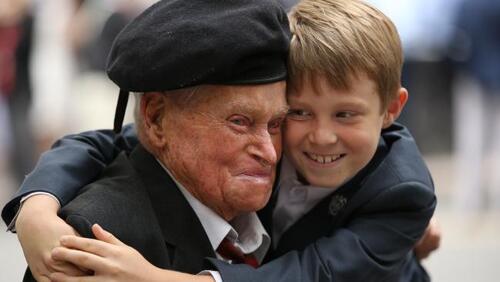
He is the last man standing and, at 94, there are times that Grahame Tweedale feels every bit his age — but not when he climbed out of his wheelchair and formed up with Anzac Day marchers, cheered to the rafters by a flag-waving crowd.
“I’m trying to look forward, not backwards,” Mr Tweedale said, his eyes glistening at the thought of all those mates who had faded away.
For the fourth year running, he was the only World War II veteran of the 7th Division Cavalry Regiment to march in Brisbane.
“You have to live for today, don’t you? That’s one of the things we learned,” he said.
In Gallipoli, 2000 people were on hand for downsized ceremonies near Anzac Cove and atop the deadly ridge at Lone Pine.
Trekkers traversed the still-intimidating Kokoda Trail to see the sun rise over Bomana war cemetery in Papua New Guinea, scene of the 1942 battles that saved Australia from Japanese invasion.
In France, the sacrifice of the 60,000 Australian troops killed in World War I was remembered at the Australian National Memorial in Villers-Bretonneux where Governor-General Peter Cosgrove said: “Let us never forget each other and what truly binds us.”
Malcolm Turnbull spoke of the wartime service of his grandfather, an infantry private on the Western Front. “We talked about many things, Fred and I — fishing and carpentry, politics and poetry — but he never talked to me about the trenches,” the Prime Minister said, delivering the commemorative address at the Australian War Memorial in Canberra. “A lot of his generation were like that.”
Serving Diggers on deployment in Afghanistan paraded in the chill of a Kabul dawn, while at Camp Taji in Iraq the Australians didn’t move a muscle when a cloud of mosquitoes descended on the Anzac Day service. Chief of the Defence Force Mark Binskin told them: “The courage, endurance and mateship forged by the Anzacs is carried by the men and women who serve Australia on operations today.”
If the crowds were smaller at home, the emotion invested in Anzac Day was heightened by the realisation another generation of servicemen and servicewomen would soon be gone.
At last count, fewer than 14,000 World War II veterans remain, with time catching up with them at an estimated rate of 30 a day. Mr Tweedale’s unit is a case in point. Only one other veteran of the 7th Division Cavalry Regiment, 99-year-old Fred From, was well enough to join the Brisbane parade — and he rode in a Jeep, along with most World War II vets.
Mr Tweedale was determined to march. When granddaughter Kristi James, 43, suggested he use a wheelchair, he bristled. “He belted me with his walking stick and said, ‘No, I want to do it myself’,” she said after they completed the march. A happy crowd of 25,000 cheered them on.
Mr Tweedale said he was honouring not only his comrades, but also his late wife, Betty, who collapsed and died while watching him march on Anzac Day eight years ago. He had lied about his age to join up in 1940 and became a gunner on a Bren gun carrier, fighting in North Africa and PNG. The regiment took such heavy casualties during the do-or-die battles on the Kokoda Trail and at Milne Bay in 1942 that it had to be folded into another formation.
Mr Tweedale did not get home to Betty until 1946, after the Japanese surrendered. They went on to have nine children, 29 grandchildren and 56 great-grandchildren. For all the pride he has in his war service, Anzac Day is increasingly tinged with personal sadness. “What else could it be?” he said, recalling his absent wife and friends.
The changing of the guard, from World War II veterans to those of later conflicts was reflected in the order of march in Melbourne, led for the first time by Vietnam War vets.
This year marks the 50th anniversary of the Battle of Long Tan, when 108 Australian troops held off a regiment of up to 2500 enemy Vietnamese soldiers and militia.
As veterans and serving defence personnel filed by in Sydney, people in the crowd shouted “Thank you”. A spritely Jack Brightwell, a World War II artillery surveyor, said the support was uplifting. “I think solidarity within the community is necessary. There’s plenty of evil out there.”
In Perth, a downpour failed to dampen the enthusiasm of either marchers or onlookers. World War II veteran Leonard Bowley was so keen to get to the parade he made sure his doctor discharged him from hospital in time. The 95-year-old was drenched but in good spirits as he was pushed in his wheelchair by his granddaughters.
The march in Adelaide attracted a crowd of 15,000, lining CBD streets from the War Memorial to the Cross of Sacrifice. Anzac Day committee chairman Ian Smith said politicians who sent young men and women to war had a duty to care for them when they returned home. “Sadly, this process can result in family breakdown, homelessness and has even seen a number of our veterans take their own lives,” he said.
 votre commentaire
votre commentaire
-
Par Heloaustralia le 11 Avril 2016 à 05:29
G’day everyone. As promised, here is the second article of the theme « social rituals ». The first one is here. The Australian society is very lively and quite different from the French one. Australians are always cheerful, ready to help and they like small talks.
Customs and habits
Here are some simple facts you need to know about Australia:
-
The Australian lifestyle is westernised. Australians love barbecues, called BBQ or Barbies.
-
The culture of sport is very present: football, rugby, bike, surfing… Australians also love running and are used to doing their jogging in town.
-
Australians love to travel, inside or outside the country. They especially like to go to Fiji, the USA, the United Kingdom and New Zealand, where English language is spoken.
-
They are also big beer drinkers: Australia is the 4th largest consumer of beer. An Aussie drinks 107 litres of beer per year!
-
Australians are familiar and very friendly. For example, starting talking with the cashier, with someone met in the street or with someone at the supermarket is an ordinary situation.
Business etiquette
Since I’m not very familiar with the Australian professional world and how it operates, I went on the website Kwintessential to find some information.
The Australian organisation of work is informal. Greetings are simple: a handshake and a smile. Punctuality is essential.
Australians don’t need to build strong relationships to do business with someone else. Moreover, they are direct and straightforward. They don’t beat around the bush. Their language and their proximity to others may surprise foreigners.
Decision-making is made at the top of the corporate hierarchy, but subordinates are consulted. In everyday life, the hierarchy is of little importance: a basic employee can discuss with the company's CEO.
To finish with, clothing is traditional: suit for men, dress for women.
Some events
In Australia, the events are many and varied. Let's talk about 2 specific events.
The Australian Open
This event is a world famous tennis tournament, organised by the
 International Tennis Federation. It’s part of the Grand Slam, as well as Roland Garros in France, Wimbledon in London and the US Open in New York.
International Tennis Federation. It’s part of the Grand Slam, as well as Roland Garros in France, Wimbledon in London and the US Open in New York.The Australian Open is held in Melbourne in January, since 1905. This tournament brings together the best tennis players of the world.
The Open takes place at Melbourne Park and mobilises 23 tennis courts for the competition. One of the courts has a sunroof in case of bad or hot weather. 15,000 spectators can be accommodated.
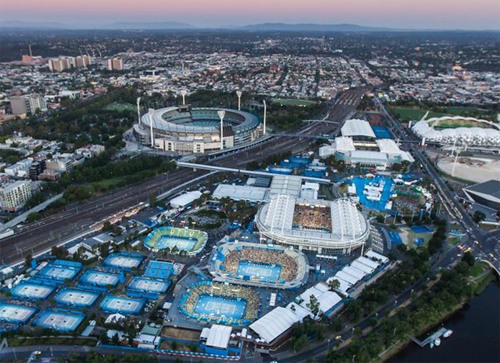

In 2013, Novak Djokovic (Serbia) became the first player in the Open era to win the Australian Open tournament three times in succession.
For men, it's Roger Federer (Switzerland) who owns the largest number of victories in the Australian Open: 69 in 14 participations. For women, Serena Williams (USA) and Martina Navratilova (Czechoslovakia) are equal for the largest number of victories: 58 each.
You can visit the website dedicated to the Australian Open here.
Sydney Mardi Gras
The Sydney Gay and Lesbian Mardi Gras is a festival and a parade held every year since 1978, from the 7th of February to the first Sunday of March.
This colourful event gathers hundreds of thousands of people from around the country, and even from abroad.


Many events take place: drag queens races on Bondi Beach, a roundtable on LGBTQI issues, a film festival, a parade and a great Mardi Gras party... In the end, nearly 80 events are organised during this period.

Each year the Sydney Gay and Lesbian Mardi Gras makes a lot of money for New South Wales: 30 million dollars, that is the second most lucrative event of the year for the State.
If you like more information, please visit the event's website.
I can’t end up this article without mentioning the Australian culinary specialties, which are very different from the French ones.
If you travel to Australia,
 you will probably eat vegemite. This paste is typically Australian and it’s made from brewer's yeast.
you will probably eat vegemite. This paste is typically Australian and it’s made from brewer's yeast.You will also find the meat pie, which is a takeaway:
Finally, as Australia is the country of wildlife, you may have the chance to eat kangaroo, emu and crocodile meat. Enjoy your meal!
 1 commentaire
1 commentaire
-
-
Par Heloaustralia le 25 Mars 2016 à 03:53
Australia is more than 7 million km² big and there are 23 million inhabitants (France: 640.000 km² and 66 million inhabitants). The country is made up of six States (New South Wales, Western Australia, South Australia, Victoria, Queensland, Tasmania) and two Territories (Australian Capital Territory and Northern Territory).
This article is the first part of the theme “social rituals”. I will talk about national symbols and Australia Day in it. In another article, I will develop the Australian customs and some national events. Let's go!
The symbols
The flag
Here is the Australian Flag:
On the top left, there is the Union Jack, the flag of the United Kingdom. Indeed, Australia was discovered and colonised by the British, before becoming independent. Today, the country is still part of the Commonwealth, which includes former British colonies or protectorates.
Below the Union Jack, the white star is the Federation Star. There are 7 branches: 6 representing the States and one for the Australian Territories.
On the right side of the flag, there are 4 other white stars with 7 branches, and a smaller one with 5 branches only. Together, they represent the Southern Cross (or “Crux”), a constellation of the Southern hemisphere.
The Southern Cross is also present on other national flags: Brazil, Papua New Guinea, New Zealand.Brazil flag Papua New Guinea flag
New Zealand flag. It is very similar to Australia's one, but it is currently changing.
The Australian flag was adopted in 1901 by the monarch, and officially recognised as a national flag in 1954.
The arms
They are the official symbol of Australia. The arms were approved by George V in 1912.Melbourne Museum
The Federation Star is at the top. The shield is made of the symbols of the 6 States. It is held by a kangaroo and an emu (native Australian animals and national emblems) and supported by two branches of mimosa. These specific animals have a strong symbolic because they cannot retreat.
The national anthem
The Australian national anthem is called "Advance Australia Fair". It is the achievement of Peter Dodds McCormick and it is played since 1984. The Australian government wanted to break away from the British anthem "God Save the Queen." In 1973, they launched a competition so that Australian citizens choose their national anthem.
Here are the lyrics:♫ Australians all let us rejoice,
For we are young and free;
We've golden soil and wealth for toil,
Our home is girt by sea;
Our land abounds in Nature's gifts
Of beauty rich and rare;
In history's page, let every stage
Advance Australia fair !
In joyful strains then let us sing,
« Advance Australia fair! »
Beneath our radiant southern Cross,
We'll toil with hearts and hands;
To make this Commonwealth of ours
Renowned of all the lands;
For those who've come across the seas
We've boundless plains to share;
With courage let us all combine
To advance Australia fair.
In joyful strains then let us sing
« Advance Australia fair! » ♫
Most of the time, only the first stanza is played and sung. You can listen to this verison in the video below:
If you wish to hear the full version, click here.
The National Day: Australia Day
Australia Day is celebrated every 26th of January. It is very popular over there.
The date commemorates the arrival of the first European Fleet at Sydney Cove in 1788 and the proclamation of British sovereignty.
A website is dedicated to this day, where you can read the following:“On Australia Day we come together as a nation to celebrate what's great about Australia and being Australian. It's the day to reflect on what we have achieved and what we can be proud of in our great nation. It's the day for us to re-commit to making Australia an even better place for the future.
Though 26 January marks this specific event, today Australia Day celebrations reflect contemporary Australia: our diverse society and landscape, our remarkable achievements and our bright future. It also is an opportunity to reflect on our nation's history, and to consider how we can make Australia an even better place in future.
On Australia Day, over half of the nation’s population attend either an organised community event, or get together with family and friends with the intention of celebrating our national day.”
The 26th of January is a holiday in every State and Territory of Australia. Many festivities take place that day: citizenship ceremonies, concerts, community festivals, fireworks...
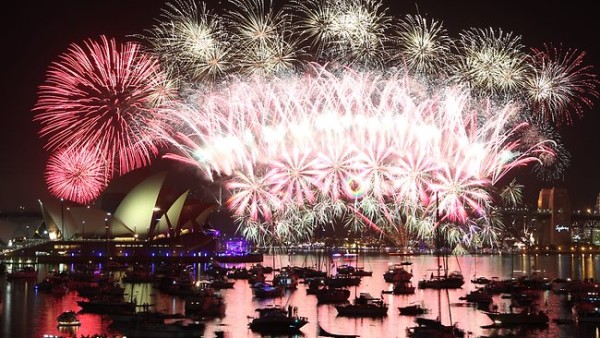
Australian citizens take the opportunity to picnic, watch sporting events on TV; in short, to relax.On that day, there are also the Australian of the Year Awards; they are for those who achieved great things for their country (much like the Legion of Honour in France).
That's it for the first part of the theme “social rituals”. I hope you’ve learned something (because I have!). Stay tuned for part 2! 1 commentaire
1 commentaire Suivre le flux RSS des articles de cette rubrique
Suivre le flux RSS des articles de cette rubrique Suivre le flux RSS des commentaires de cette rubrique
Suivre le flux RSS des commentaires de cette rubrique






